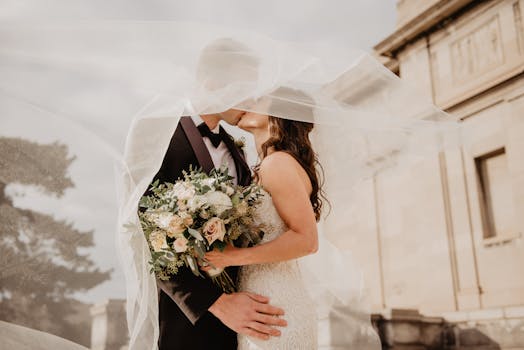If you’re applying for a U.S. green card through marriage, proving that your relationship is real — or “bona fide” — is one of the most important parts of the process. U.S. Citizenship and Immigration Services (USCIS) carefully reviews marriage-based immigration petitions to detect fraud. In this guide, we’ll explain what a bona fide marriage means, what evidence USCIS expects, and how to prepare your case with confidence.
What Is a “Bona Fide” Marriage?
A bona fide marriage is one entered into for genuine reasons — love, companionship, shared life goals — not for the purpose of securing an immigration benefit. U.S. immigration law requires that your marriage be legally valid and entered into in good faith.
If USCIS suspects a “green card marriage” (one entered solely for immigration benefits), they will deny your petition and may even refer the case for investigation.
When Do You Need to Prove Your Marriage Is Real?
You must prove a bona fide marriage when:
- Filing Form I-130 (Petition for Alien Relative)
- Applying for adjustment of status (Form I-485)
- Attending a green card interview
- Removing conditions on residence using Form I-751 (if you have a 2-year conditional green card)
In each of these cases, the burden of proof is on the applicant and U.S. citizen or green card–holding spouse.
What Types of Evidence Can Prove a Bona Fide Marriage?
USCIS looks for documentation that shows you share a life together — financially, emotionally, and socially. Here are categories of evidence that help support your case:
1. Joint Financial Records
- Joint bank account statements
- Shared credit cards or loans
- Joint tax returns (Form 1040 with “Married Filing Jointly”)
- Pay stubs showing shared address
2. Shared Residence Documents
- Lease or mortgage with both names
- Utility bills (electric, internet, water)
- Rental insurance, home insurance policies
- Mail addressed to both at the same home
3. Insurance and Legal Documents
- Health, life, or car insurance listing each other as beneficiary or dependent
- Wills, powers of attorney
- Retirement or pension plans with spouse listed
4. Photos and Social Evidence
- Photos together across different dates and settings (weddings, holidays, family events)
- Screenshots of text messages, emails, or social media exchanges
- Travel itineraries and tickets showing joint trips
- Wedding invitations or registry records
5. Affidavits from Friends and Family
You can submit 2–4 affidavits (written, notarized statements) from people who know your relationship well. Each affidavit should include:
- The writer’s name, address, and immigration status
- How they know you and your spouse
- Personal observations confirming your relationship is real
How Much Evidence Do You Need?
There’s no set number, but more varied, consistent, and up-to-date evidence builds a stronger case. A few documents from each category are ideal. If you’re newly married or don’t live together yet, USCIS will expect an explanation and may look more closely at the totality of evidence.
Red Flags That May Trigger Scrutiny
USCIS officers are trained to detect signs of a fraudulent marriage. Common red flags include:
- Large age difference between spouses
- Different languages with no clear communication method
- Brief dating period before marriage
- Living apart with no solid explanation
- Lack of shared finances or property
- Contradictory answers at the interview
None of these are automatic disqualifiers, but they may lead to additional questioning or a second interview.
What Happens at the Marriage-Based Interview?
At the interview, both spouses must attend and present original documents. The USCIS officer will ask questions such as:
- How did you meet?
- When and where was your wedding?
- What side of the bed does your spouse sleep on?
- What is your spouse’s favorite meal?
- When did you last travel together?
If the officer has doubts, you may be separated and asked the same questions in separate rooms. Inconsistent answers can lead to a denial.
What If You Have a Conditional Green Card?
If you’ve been married less than 2 years when your green card is approved, you’ll receive a 2-year conditional green card. To keep your status, you must file Form I-751 to remove conditions within 90 days before your green card expires.
Form I-751 requires updated proof that your marriage is still genuine, including:
- Joint tax returns from the last two years
- Birth certificates of children (if applicable)
- Photos, leases, bank records from the 2-year period
- Letters from employers or religious leaders confirming your relationship
What If You’re Separated or Divorced?
If the relationship ends before removing conditions, you may still file Form I-751 with a waiver, explaining:
- The marriage was entered in good faith
- The relationship ended due to divorce or abuse
- You would suffer extreme hardship if deported
Expect a higher burden of proof and detailed documentation in these cases.
Real-Life Example
Let’s say Maria, a U.S. citizen, marries Alex, a Canadian national. They live together, open a joint bank account, file taxes together, and take regular trips to visit Maria’s parents. Their USCIS file includes:
- Photos from their wedding
- Lease agreement
- Health insurance with both names
- Text screenshots discussing travel plans
- Affidavits from friends
When they attend their green card interview, they answer confidently and consistently. Their petition is approved within 4 weeks.
Key Takeaways
- Honesty and consistency matter as much as paperwork
- Collect evidence from as many categories as possible
- Start gathering proof early — don’t wait until the interview
- Keep updating your file after marriage and through the green card process


